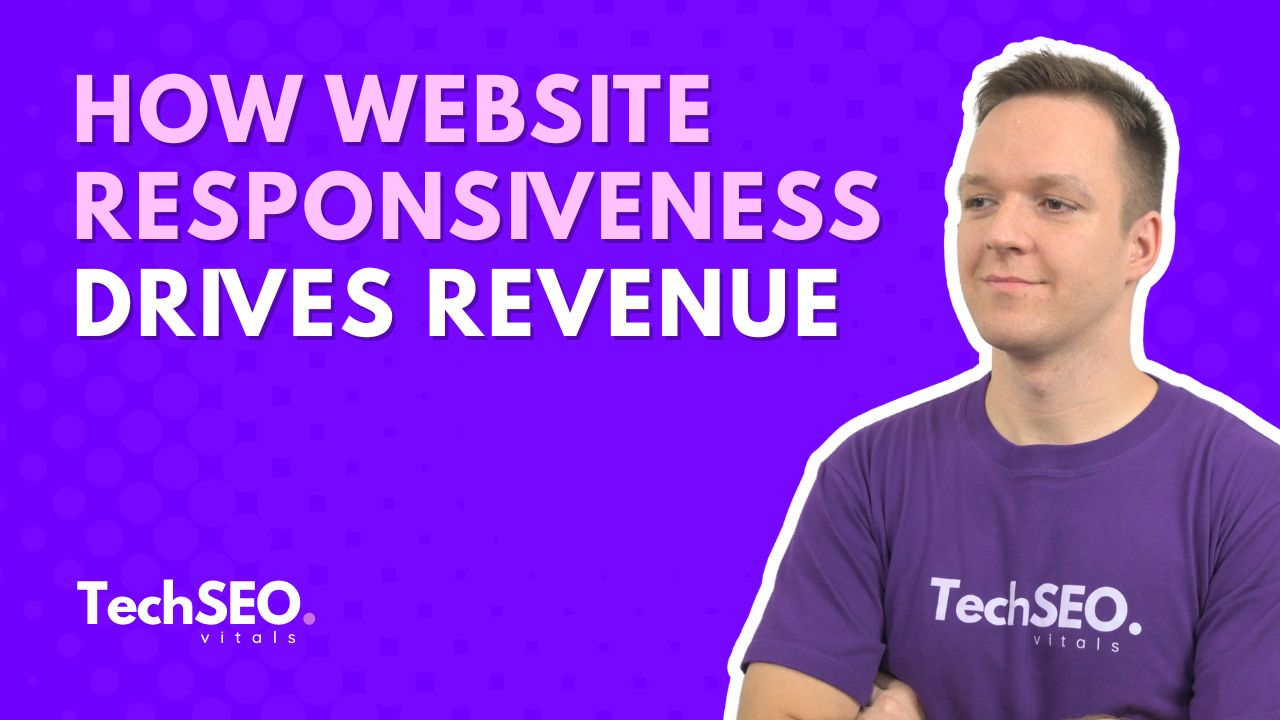Slow website interactions are costing businesses mainly through lost revenue. When Rakuten fixed their interaction delays, they saw conversion rates jump 33% and revenue per visitor surge 53%. Not just Rakuten, an analysis of nearly a thousand websites found that users experiencing fast Interaction to Next Paint (INP) scores convert 25% better than those dealing with sluggish responses.
Website Speed Could Be Worth Millions
Google's research on Core Web Vitals shows that meeting Core Web Vitals thresholds makes users 24% less likely to abandon page loads. For INP specifically, desktop users with good scores convert 45% higher than those with poor INP, while mobile users see approximately 12% improvement. On high-traffic volumes, that translates to substantial revenue gains.
Poor INP is the hidden conversion killer, causing frustrated users to abandon carts, leave forms incomplete, and bounce to competitors. While businesses obsess over page load speed, it’s only 10% of the time users spend on a webpage. The rest 90% only happens after load. Thus, optimizing INP is crucial to reduce interaction time and reduce lags.
The Silent Business Killer Most Companies Ignore
Every click, tap, or scroll is a critical moment. When potential customers tap "Add to Cart" and nothing happens for half a second or more, it isn’t just a minor technical glitch; it’s a critical mistake that can cost customers and sales.
Consider this Google research statistic: 79% of shoppers who experience poor website performance say they won't return. Which means; regardless of how much budget is spent boosting website traffic, having interaction issues can still result in sales loss. For founders and marketing directors, this represents wasted Customer Acquisition Cost (CAC) as visitors bounce to other websites faster.
The problem becomes even more critical on mobile devices. While 97% of desktop sites achieve good INP scores, only about 65% of mobile sites meet the same standard. If expensive PPC traffic isn't converting or checkout abandonment rates remain high, responsiveness is likely that revenue killer.
Understanding INP: The New Business Metric
What exactly is INP, and why should businesses care? Think of websites as physical retail stores. Page load speed is like unlocking the front door on time, but Interaction to Next Paint (INP) measures how quickly staff respond once customers are inside.
INP tracks the delay between a user interaction (like clicking a button) and when the browser actually shows a response. Google defines good INP as under 200 milliseconds. Anything over 500 milliseconds makes websites feel broken, directly impacting trust and conversions.
This metric matters now more than ever because Google elevated INP to a Core Web Vital in March 2024, replacing First Input Delay. That means, even when websites load quickly, if every interaction still lags, it will still frustrate users affecting your rankings.
The ROI Justification
Based on industry research, improving from "poor" to "good" INP typically delivers a 10% to 25% conversion rate lift.
Here's a realistic example: If your website currently converts 2% of 100,000 monthly visitors with an average order value of $100, you're generating $200,000 per month. Raising conversions just to 2.5% means 500 extra orders and $50,000 in monthly revenue; an additional $600,000 per year.
Even after spending about $30,000 on implementation, your first-year ROI still lands near 1,900 %. Very few initiatives can match that return.
Real-World Success: The redBus Story
To see these principles in action, consider redBus, a leading online bus ticketing platform. They recognized that making their platform more responsive could improve bookings in their highly competitive market.
Their team discovered that interaction delays were worse than expected, especially for mobile users booking on the go. They set a clear goal to make every tap feel instant regardless of device or network.
Through systematic optimization of client-side processing and network delays, redBus brought interactions that previously took over 500ms down to the low 100s of milliseconds. The result? 7% sales increase, with thousands of additional bookings, without any extra marketing budget, just direct results of INP improvements.
Your Three-Phase Implementation Roadmap
The following is a three step approach recommended to optimize INP for your business.
Phase 1: Quick Wins (First Month)
Measure current INP on key pages using Google's PageSpeed Insights (CrUX section) or Search Console's Core Web Vitals report. You'll often discover obvious culprits such as: heavy third-party scripts, analytics tags, or pop-ups that appear during user interactions.
Immediate actions to take:
- Add loading spinners for longer processes
- Move analytics and ad scripts to run after UI updates
These changes require minimal resources but deliver immediate results.
Phase 2: Deep Optimization (Months 2-3)
Once you've captured the easy wins, tackle the structural issues. Conduct a thorough analysis of worst-performing interactions using Chrome DevTools. You'll often find long JavaScript tasks or unnecessary page re-rendering blocking responses.
Key optimization areas:
- Refactor heavy JavaScript functions
- Pre-render UI elements instead of building them on demand
- Upgrade to more efficient libraries
- Implement modern techniques like scheduler.yield() for unavoidable long tasks
This phase requires dedicated engineering time but delivers significant improvements.
Set measurable goals and tie them directly to business KPIs.
Phase 3: Continuous Monitoring
Web performance isn't a one-time project. Implement real-user monitoring for INP and other Core Web Vitals using tools like DebugBear for RUM and create dashboards that correlate performance with conversion rates. Set up alerts for regression and make performance part of your development culture.
Your Action Plan Starts Now!
Ready to capture these results for your business? Here's your immediate action plan:
- Audit the current INP using Google's PageSpeed Insights (CrUX section) or similar tools on critical pages.
- Prioritize quick fixes with your development team; setting a 30-day goal for initial improvements.
- Align resources and budget, framing the investment as spending one dollar to get ten back.
- Set clear timelines and KPIs that tie technical improvements to business metrics.
- Monitor and iterate, carefully track results and note improvements.
If you lack in-house technical SEO resources, consider bringing in expert help. In my work with clients, I focus on connecting technical improvements with outcomes that actually matter to the business. Getting started sooner is usually best, since delays often translate into missed conversions.
Conclusion
Website responsiveness isn't just a technical metric; it's a fundamental business driver that directly impacts revenue. The data is compelling: companies improving their INP see dramatic increases in conversion rates, revenue per visitor, and customer satisfaction.
Optimizing website responsiveness isn’t an optional feature anymore; it’s crucial in meeting the expectations your customers already have. Competitors who move faster gain the advantage, and every delay risks leaving opportunities on the table.




